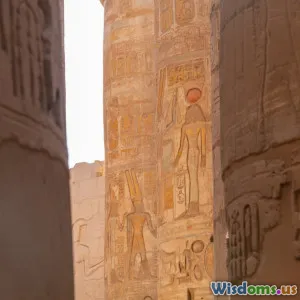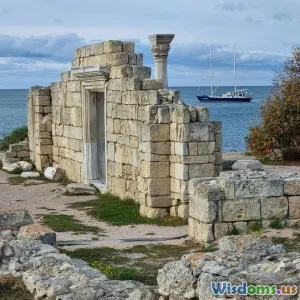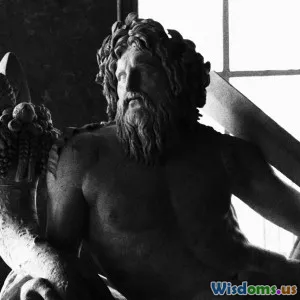
Archaeological Wonders Through Time
6 min read Explore the enchanting mysteries of ancient civilizations through archaeological wonders that unveil the secrets of our past. (0 Reviews)
Archaeological Wonders Through Time
Archaeology serves as a time machine, allowing us to travel back to the eras of ancient civilizations and uncover the mysteries that lie beneath the earth's surface. From the majestic pyramids of Egypt to the enigmatic ruins of Machu Picchu, each archaeological site tells a unique story about human history, culture, and ingenuity.
The Significance of Archaeology
Archaeology not only unveils the physical remnants of past societies but also enhances our understanding of social structures, economic systems, and cultural practices. Through careful excavation and analysis, archaeologists piece together the puzzles of human existence, revealing how ancient people lived, worshipped, and interacted with their environment.
The Pyramids of Giza: Engineering Marvels
One of the most iconic archaeological wonders is the Great Pyramid of Giza, built around 2580–2560 BC. As the largest of the three pyramids in Giza, it stands as a testament to the architectural prowess of the ancient Egyptians. Constructed from approximately 2.3 million blocks of stone, each weighing between 2.5 to 15 tons, the pyramid showcases advanced engineering techniques that are still a source of fascination today.
Despite centuries of study, questions remain about the methods used to transport and assemble these massive stones. Recent discoveries, including evidence of a lost city near the pyramids, continue to shed light on the logistical challenges faced by the builders.
Machu Picchu: The Lost City of the Incas
Perched high in the Andes Mountains of Peru, Machu Picchu is another remarkable archaeological wonder. Rediscovered in 1911, this Incan citadel encapsulates the sophistication of Incan engineering and agriculture. The terraced fields, sophisticated water management systems, and precise stonework reflect a deep understanding of the natural landscape.
What makes Machu Picchu particularly intriguing is its purpose. Was it a royal estate, a religious site, or a strategic military outpost? Ongoing research is uncovering more about the significance of this enigmatic site, including the discovery of nearby Incan trails that hint at a vast network of trade and communication.
Stonehenge: The Celestial Enigma
Situated in the English countryside, Stonehenge is one of the most famous prehistoric monuments in the world. Believed to have been constructed between 3000 BC and 2000 BC, its purpose has sparked countless theories—from astronomical observatory to religious site. The alignment of the stones with the solstices suggests a sophisticated understanding of astronomy that challenges our perception of prehistoric societies.
Recent advancements in technology, such as ground-penetrating radar, have revealed previously unknown structures and burial sites nearby, further enriching our understanding of the people who constructed this monumental site.
The Role of Modern Technology in Archaeology
Technological advancements have revolutionized the field of archaeology. Techniques such as remote sensing, 3D modeling, and DNA analysis have opened new avenues for exploration and discovery. For instance, satellite imagery has led to the discovery of ancient cities hidden beneath dense forests, while DNA analysis has provided insights into the migration patterns of ancient populations.
The Terracotta Army: Guardians of the Tomb
Discovered in 1974 near Xi'an, China, the Terracotta Army is a striking example of how modern archaeology can reveal the complexities of ancient civilizations. Commissioned by Emperor Qin Shi Huang in the 3rd century BC to accompany him in the afterlife, this vast army of life-sized statues demonstrates the emperor's power and the artistry of the Qin dynasty.
Archaeological efforts continue to uncover new figures, weapons, and artifacts, piecing together the story of the Qin dynasty and its impact on Chinese history.
Conclusion
The wonders of archaeology remind us of our shared human heritage and the intricate tapestry of civilizations that have shaped our world. As technology advances and new discoveries are made, our understanding of ancient societies continues to evolve. Each excavation not only uncovers artifacts but also ignites our curiosity about the lives, beliefs, and mysteries of those who came before us. The journey through time, guided by the hands of archaeologists, invites us to engage with our past and understand the foundations of our present and future.
Through the lens of archaeological wonders, we can connect with the stories of our ancestors and appreciate the richness of human history that continues to unfold.
Rate the Post
User Reviews
Popular Posts





















